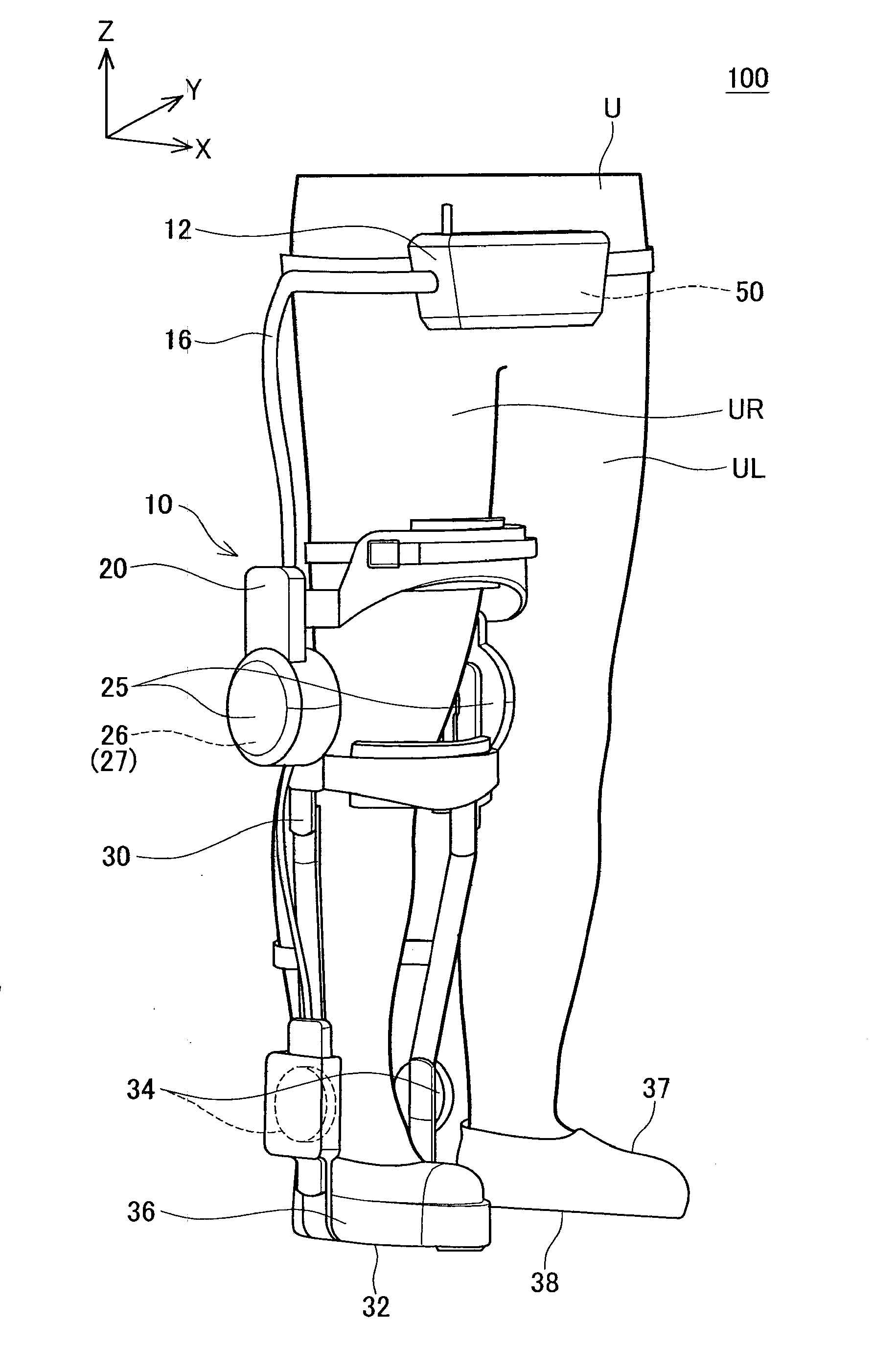Walking assist device
a technology of walking assist and wearable parts, which is applied in the direction of battery maintenance/servicing, manufacturing tools, and primary cell maintenance/servicing, etc., can solve the problems of reducing the electric power supplied to the actuator, restricting the ability of the walking assist device, and reducing the use effect of batteries
- Summary
- Abstract
- Description
- Claims
- Application Information
AI Technical Summary
Benefits of technology
Problems solved by technology
Method used
Image
Examples
Embodiment Construction
[0023]FIG. 1 shows a schematic view of a walking assist device 100 in a first embodiment. The waling assist device 100 mainly comprises a leg attachment 10 which is attached to a right leg (UR) of a user U and a controller 12 which controls the leg attachment 10. Note that the controller 12 has a built-in battery 50. In the present embodiment, assume that the user U is a patient whose left leg UL is sound but right leg UR is impossible to move freely. Since the left leg UL is sound, the leg attachment 10 is attached only to the right leg UR. The right leg UR corresponds to a wearing leg, and the left leg UL corresponds to a sound leg.
[0024]A coordinate system will be described before describing the walking assist device 100. As shown in FIG. 1, an x-axis is set in a forward direction of the user U, a y-axis is set in a lateral direction of the user U, and a z-axis is set in a vertically upward direction. In general, in a technical field of robots, an axis (x-axis) extending in a fro...
PUM
 Login to View More
Login to View More Abstract
Description
Claims
Application Information
 Login to View More
Login to View More - R&D
- Intellectual Property
- Life Sciences
- Materials
- Tech Scout
- Unparalleled Data Quality
- Higher Quality Content
- 60% Fewer Hallucinations
Browse by: Latest US Patents, China's latest patents, Technical Efficacy Thesaurus, Application Domain, Technology Topic, Popular Technical Reports.
© 2025 PatSnap. All rights reserved.Legal|Privacy policy|Modern Slavery Act Transparency Statement|Sitemap|About US| Contact US: help@patsnap.com



